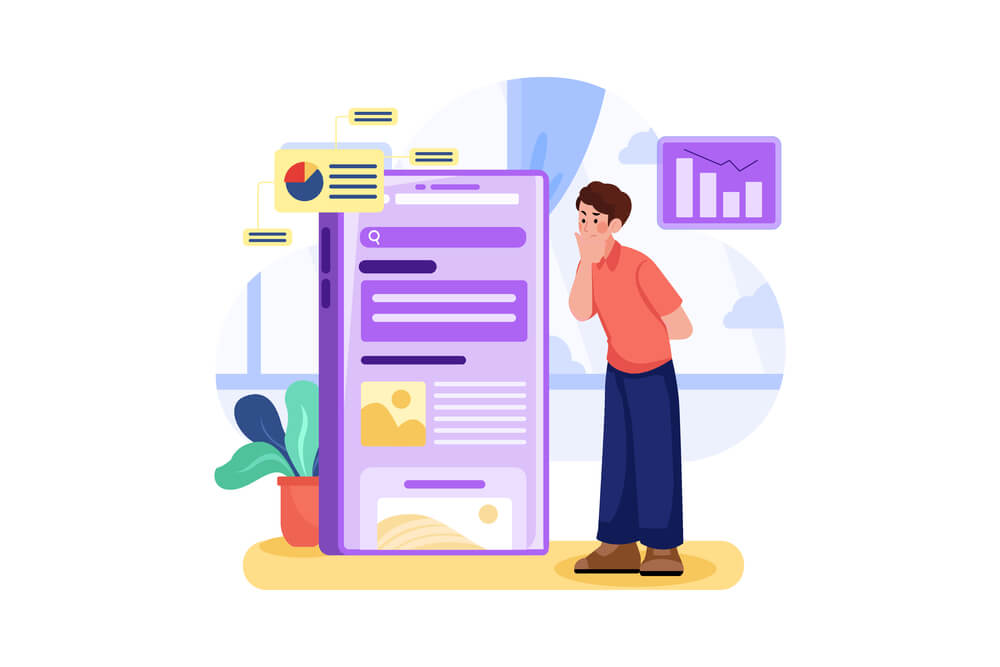Think your website’s speed is just a minor detail? Think again! The speed at which your site loads is a major player in the game of online success. We live in a world where users expect instant gratification; if your site takes too long to load, they’ll be off to a competitor in a heartbeat. From grabbing users’ attention in the blink of an eye to climbing the ranks in search engine results, every millisecond counts. If you’re serious about keeping visitors hooked and skyrocketing your search rankings, optimizing your site’s speed isn’t just a suggestion—it’s a must!
So, buckle up and get ready to hit the fast lane! We’re about to unveil how page load speed can be your secret weapon for elevating your SEO game. You’ll discover practical tips and tricks to rev up your website’s performance and keep your audience engaged. Ready to leave your competition in the dust? Let’s dive in and turbocharge your online presence!
Understanding the Speed of Page Loading

What is Page Load Velocity?
So, what exactly is page load velocity? In simple terms, it’s the speed at which a webpage displays its content after you click a link or type in a URL. Think about it: when you hit that enter key or tap on a link, you’re eager to see what’s on the other side. This speed encompasses everything on the page—text, images, scripts, and various media elements that make up the whole experience. Page load velocity measures the time it takes from when you initiate that page request to the moment the entire page becomes visible and interactive. It’s not just about seeing the content, it’s about how quickly you can dive in and start engaging with it.
Now, why does this matter? Well, consider how impatient we’ve all become as internet users. If a site takes too long to load, we’re likely to abandon it and look for something else—sometimes without even thinking twice! A snappy page load speed keeps visitors happy and engaged, encouraging them to explore your site further rather than bouncing off in search of faster alternatives. Plus, search engines like Google take page load velocity seriously when ranking sites. So, by understanding and optimizing your page load speed, you’re not just enhancing user experience—you’re also giving your site a better chance to climb the search rankings and attract more traffic.
The Importance of First Impressions
Making a strong first impression is everything in the digital world. When someone lands on your website, they’re not just there to browse—they’re looking for an experience that captivates and engages them right off the bat. If your site is slow to load, visitors can get frustrated and might bail out before they even see what you have to offer. That’s a surefire way to boost your bounce rates and lose potential customers. In today’s fast-paced online environment, users expect websites to load almost instantly. So, if your site drags its feet, you risk leaving a negative impression that could deter visitors from coming back.
Understanding the importance of user satisfaction goes beyond just keeping your visitors happy; it also has serious implications for your site’s visibility. Search engines like Google have caught on to the fact that page loading speed is a key player in user experience, and they’ve woven it into their ranking algorithms. What does that mean for you? A fast-loading website isn’t just a perk—it’s a necessity if you want to improve your search engine rankings and attract more traffic. By prioritizing speed, you’re not only creating a more enjoyable experience for your visitors but also setting your site up for greater success in the crowded online space. In short, making a great first impression could be the difference between a loyal customer and a missed opportunity!
Why Page Speed Matters for Your SEO Score
1. Google’s Need for Speed
When it comes to search engines, Google reigns supreme, and they’re all about delivering the best online experience for users. This commitment translates into their ranking criteria, where page loading speed plays a pivotal role. So, if your website loads quickly, you’re not just making life easier for your visitors; you’re also stacking the odds in your favor when it comes to search rankings. Google wants to highlight websites that provide a smooth, efficient browsing experience, and faster sites are often rewarded with higher visibility in search results.
Think about it: if you’re a user searching for information, you’re more likely to click on a site that pops up almost instantly rather than one that drags on for ages. By prioritizing speed, Google ensures that users find what they need quickly and easily, which is a win-win for everyone involved. So, if you want to climb the SEO ladder and leave slower competitors in the dust, focusing on page speed is crucial. It’s not just a nice feature, it’s a key ingredient in your recipe for online success.
2. Bounce Rates and Rankings
When visitors land on your webpage and leave almost instantly—often because it’s taking too long to load—your site ends up with a higher bounce rate. This isn’t just a nuisance; it sends a clear signal to Google that something’s off with the user experience. If people are hopping off your site before it even fully loads, Google takes notice and might start to think your site isn’t meeting users’ needs. This can seriously hurt your search engine rankings and visibility, making it harder for potential visitors to find you.
Now, let’s flip the script. When you invest in improving your page load speed, you not only give users a better experience but also keep them on your site longer. For example, consider an e-commerce site that loads quickly. Shoppers are more likely to browse through products, add items to their carts, and ultimately make purchases instead of bouncing off to check out a competitor with a sluggish site. This extended engagement can lead to better conversion rates and, you guessed it, improved rankings in search results. In the end, focusing on faster load times is a win-win: it enhances user satisfaction and boosts your site’s SEO performance, setting you up for success in the competitive online landscape.
Strategies for Optimizing Page Load Velocity
1. Image Refinement
When optimizing your page load speed, one of the biggest culprits can be oversized images. Large, uncompressed images slow down your site, frustrating users eager to engage with your content. To tackle this, use compression techniques and appropriate file formats. For instance, convert heavy images saved as BMP or TIFF to more web-friendly formats like JPEG or PNG. Tools like TinyPNG or ImageOptim can significantly reduce file sizes without sacrificing quality. If an original image file was 2MB, optimization might shrink it down to just 300KB, resulting in faster load times.
Additionally, implementing lazy loading can further enhance performance. This technique ensures that only images visible in the user’s viewport load initially, while those further down the page only appear as users scroll. For example, an online clothing store can keep visitors engaged by allowing them to see product images quickly without having to wait for the entire page to load. By refining images in these ways, you not only improve the user experience but also boost your SEO efforts by reducing bounce rates and enhancing search rankings.
2. Reduce Network Requests
Every element on your webpage—think images, scripts, and stylesheets—makes its own HTTP request when loading. The more requests your server has to process, the longer it takes for your page to fully load. To boost your page speed and enhance user experience, it’s crucial to minimize these network requests. One effective strategy is to combine multiple CSS or JavaScript files into a single file. For example, if your site has three separate CSS files, merging them into one can cut down the number of requests from three to one, significantly speeding up loading times. This simple change reduces the load on your server and can make a noticeable difference in how quickly your page appears.
In addition to file consolidation, writing cleaner, more efficient code is essential. By optimizing your code, you can eliminate unnecessary elements and streamline how the browser processes requests. For instance, instead of loading multiple libraries for a few functions, consider using a single, well-optimized library that covers all your needs. Furthermore, employing browser caching can help as it stores some elements locally, meaning returning visitors won’t need to download them again. By minimizing network requests in these ways, you create a smoother, faster-loading experience that keeps users engaged and satisfied.
3. Cache Retention
Enhancing your website’s speed is easier with browser caching. This technique allows users’ devices to store static files, like images and stylesheets, after their initial visit. So, when they return to your site, their browser can load these files from their device instead of fetching them again from the server. This results in faster page loads and a smoother experience for returning visitors.
For example, if someone frequently visits your e-commerce site, caching means they won’t have to wait for all the images to load each time. When they come back a few days later, the browser quickly retrieves the images and styles from their device, making their experience more efficient. In short, effective cache retention not only speeds up loading times but also keeps users engaged and satisfied.
4. Content Delivery Network (CDN)
Implementing a Content Delivery Network (CDN) can significantly boost your website’s loading speed. A CDN works by distributing your website’s content across various servers located around the world. This means that when a user accesses your site, they’re served content from the server closest to them, reducing the distance data has to travel and speeding up loading times.
For example, if your website is hosted in the U.S. and a visitor from Europe tries to access it, a CDN will serve them a version of your site from a nearby server instead of the one in the U.S. This setup helps ensure that users, no matter where they are, enjoy faster loading times and a smoother browsing experience. Using a CDN is a smart move for anyone looking to enhance site performance and user satisfaction.
Measuring and Monitoring Page Load Velocity

1. Tools for Assessment
When it comes to measuring your website’s performance, utilizing the right tools can make all the difference. Tools like Google PageSpeed Insights, GTmetrix, and Pingdom are excellent for evaluating your page load speed. They dive deep into various metrics, analyzing how quickly your site loads and how well it performs across different devices.
For instance, Google PageSpeed Insights not only gives you a score but also breaks down what’s slowing you down, offering actionable recommendations for improvement. Similarly, GTmetrix provides a comprehensive report detailing your site’s loading time and highlights areas that could use some optimization. By regularly assessing your website with these tools, you can track your progress and make informed decisions to enhance performance, ensuring that users enjoy a seamless and speedy browsing experience.
2. Scheduled Audits
Regularly checking your website’s speed should be part of your routine. By making it a habit to use tools like Google PageSpeed Insights or GTmetrix on a consistent basis, you can stay ahead of any speed-related issues. This proactive approach helps you spot potential problems before they become major headaches.
Think of it like routine maintenance for your car; just as you wouldn’t wait for the engine to sputter before checking the oil, you shouldn’t wait for your site to lag before assessing its performance. By scheduling regular audits, you ensure that your pages load at their best, allowing you to swiftly tackle any snags that might crop up. This way, you keep your website running smoothly and your visitors happy, all while enhancing your overall online presence.
The Essential Push for Ongoing Optimization
In the fast-paced world of SEO, the speed at which your page loads can significantly impact your success. With search engines increasingly focusing on user experience, it’s vital for website owners and developers to prioritize speedy page load times. By implementing strategies like image optimization, reducing HTTP requests, utilizing browser caching, and leveraging Content Delivery Networks (CDNs), you can enhance your website’s performance and improve its search engine rankings.
But remember, speed isn’t just about keeping users happy, it directly affects how visible and successful your website is in a competitive online space. By focusing on optimizing your page load speed, you’ll not only boost user engagement but also help your site climb the search rankings. Ready to take your website to the next level? Check out our SEO services for tailored strategies that can help you achieve just that!



